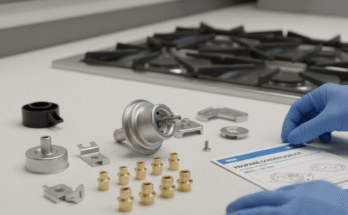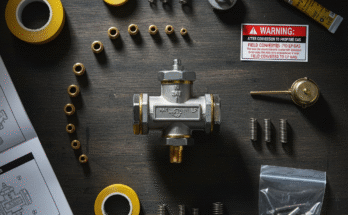For over two decades, the Armored Core (AC) franchise has captivated gamers and model kit enthusiasts alike. Developed by FromSoftware, it is a beacon of high-octane mecha combat and deep customization.Armored Core Model Kits
The intricate, hard-sci-fi designs of the ACs—towering machines of war, each a unique testament to mercenary engineering—are a natural fit for the plastic model kit hobby. They offer a tangible connection to the games’ deep customization, gritty aesthetics, and tactical weight. Builders move from virtual assembly in the hangar to physical construction on the workbench. Armored Core model kits represent a unique and challenging niche within the mecha modeling world. Armored Core Model Kits
The Lineage of Plastic: A History of AC Kits
The Armored Core game series has a long and storied history, beginning in 1997 on the original PlayStation. The hobby line that immortalizes its iconic mechs has lasted almost as long. For the vast majority of the franchise’s history, one name has defined Armored Core model kits: Kotobukiya.
Kotobukiya’s Variable Infinity (V.I.) Series: The Veterans
Kotobukiya, a Japanese company known for its detailed model kits and figures, became the definitive purveyor of Armored Core plastic models. Their primary line, the Variable Infinity (V.I.) Series, has covered ACs from various game generations. This includes fan favorites from Armored Core 4, For Answer, Armored Core V, and the classic PS1/PS2 era games.
The V.I. Series builds on a foundational principle that mirrors the games themselves: interchangeability. All parts—heads, cores, arms, legs, and weapons—are designed to be cross-compatible across the entire V.I. line, regardless of the AC’s original game.
Most V.I. kits use a 1/72 scale. For these colossal mechs, this results in a substantial and impressive finished model. The scale allows for an immense level of molded detail, faithfully capturing every vent, panel line, and hydraulic piston.

The Builder’s Perspective: Kotobukiya’s Character
Veteran builders know that Kotobukiya kits come with a distinct set of characteristics. This is especially true for older releases from the 2010s. These traits differentiate them from popular, mass-market lines like Bandai’s Gunpla (Gundam plastic models).
- Detail over Ease: V.I. kits are supremely detailed, but older molds often demand more advanced modeling techniques. The part separation is intricate, but the design is not always optimized for color accuracy out of the box. Many kits greatly benefit from painting, panel lining, and detailing to achieve the box art’s final look.
- The “Hand Grenade” Factor: A common nickname for some older Kotobukiya kits is “hand grenades.” This refers to their tendency to have extremely tight, hard-plastic joints (instead of poly-caps) and, occasionally, less secure connections for armor and weaponry. Builders often find they need a strategic application of plastic cement to secure certain parts and ensure the model remains stable for posing.
- A Rewarding Build: Despite these challenges, the V.I. kits are immensely rewarding. They perfectly capture the angular, industrial, and often asymmetrical beauty of the AC designs. Completing a White Glint or a Rayleonard Aaliyah is a badge of honor in the mecha modeling community. It culminates in a striking display piece that truly embodies the spirit of the Armored Core universe.
The Next Generation: Bandai and the Rubicon Fire
The 2023 release of Armored Core VI: Fires of Rubicon injected a massive surge of new energy into the franchise. Consequently, it revitalized the model kit market. With the series back in the global spotlight, a new player entered the ring to capitalize on the renewed interest: Bandai Spirits.
Bandai’s 30 Minutes Missions (30MM) Collaboration
Bandai Spirits, the global titan of model kits, opted to launch their AC VI line under their popular, highly customizable 30 Minutes Missions (30MM) brand. This collaboration brings the accessibility and engineering prowess of Bandai to the grim world of Rubicon.
- Focus on Accessibility and Customization: The 30MM line’s core concept is rapid assembly and ultimate cross-line customization. AC VI kits, like the Schneider Nachtreiher/40E Steel Haze and the RaD CC-2000 Orbiter Nightfall, are designed with Bandai’s modern, snap-fit engineering. They are easier to build, feature superior articulation and stability compared to older kits, and require less clean-up.
- The 30MM Ecosystem: Crucially, the Bandai AC VI kits are not only compatible with each other, but also with the entire 30MM line of weapons and option parts. This dramatically expands the creative potential for builders. It allows them to truly mix and match components from the vast 30MM ecosystem to build their “Generation 6” custom ACs. The inclusion of dedicated AC VI Weapon Sets further emphasizes the game’s component-based philosophy.
- A Different Scale: The Bandai 30MM kits are generally smaller than Kotobukiya’s V.I. line. Many of the ACs stand around (about inches) tall. This makes them comparable in size to a typical High Grade (HG) Gunpla kit. This smaller size makes them perfect for builders with limited display space and offers a quicker, more enjoyable build experience.

The Great Model Kit Schism: Choosing Your Path
A modeler interested in the world of Armored Core now has two distinct, high-quality paths to follow. Each one represents a different philosophy of the hobby.
| Feature | Kotobukiya Variable Infinity (V.I.) | Bandai 30 Minutes Missions (30MM) |
| Era Covered | Broad (AC1, 3, 4, 5, For Answer, Verdict Day, etc.) | Primarily Armored Core VI: Fires of Rubicon |
| Scale | Scale (Larger, more detailed) | Approx. or Non-Scale (Smaller, comparable to HG Gunpla) |
| Engineering | Older, highly detailed; often requires glue/cement for stability. | Modern, snap-fit, excellent articulation, very stable. |
| Customization | Interchangeable parts within the V.I. line only. | Cross-compatible with all 30MM kits and accessories. |
| Building Experience | Challenging, requires patience, highly rewarding finish. | Accessible, quick build, great out-of-the-box look. |
Advice for the Raven-in-Training
- If you are a Newcomer to mecha models: Start with the Bandai 30MM AC VI kits. Their ease of assembly, stability, and excellent articulation make for a fantastic first experience. They are less frustrating and immediately satisfying.
- If you are a Veteran Modeler or a Classic Fan: Dive into the Kotobukiya V.I. Series. They are the definitive line for older Armored Core designs. Be prepared to employ filing, cementing, and painting techniques. These kits reward your effort with unmatched detail and a commanding shelf presence.
Beyond the Build: Customization and Community
The true heart of the Armored Core franchise is customization, and the model kits fully embrace this.
- Weapon Swaps: Both kit lines encourage swapping out weaponry. The ability to change an AC’s loadout is paramount, whether you use Kotobukiya’s intricate railguns and cannons or Bandai’s vast array of 30MM weapons.
- Color Schemes: ACs in the games are defined by their paint jobs and decals. Modelers take this to the extreme. They airbrush their builds in custom colors, weather them to look battle-worn, or apply the decals of their favorite corporations (Balam, Arquebus, etc.).
- Kitbashing: This is where the magic happens. The ultimate expression of the Armored Core ethos is combining a head from an older V.I. kit with a core from a newer Bandai kit (with some minor modification/adapter parts). You build the perfect machine for the next mission.

The resurgence of the Armored Core game series has revitalized the modeling community. Online forums and social media are now flooded with custom-painted, weathered, and kitbashed ACs. This is a testament to the enduring appeal of these finely-tuned instruments of destruction.




